Reflections on Practice
 This page offers some reflections on practice from various teachers who are associated with The Mountain Hermitage, including Marcia Rose, Sayadaw Vivekananda, Annie Nugent, Venerable Dhammadinna, Andrea Fella, Greg Scharf, Jean Smith, Gina Sharpe, Winnie Nazarko, Sean Murphy, Wynn Fricke, Nikki Mirghafori, Joseph Goldstein, John Stanley, David Loy, Brian Lesage, and Larry Yang.
This page offers some reflections on practice from various teachers who are associated with The Mountain Hermitage, including Marcia Rose, Sayadaw Vivekananda, Annie Nugent, Venerable Dhammadinna, Andrea Fella, Greg Scharf, Jean Smith, Gina Sharpe, Winnie Nazarko, Sean Murphy, Wynn Fricke, Nikki Mirghafori, Joseph Goldstein, John Stanley, David Loy, Brian Lesage, and Larry Yang.
Bhikkhu Bodhi reflects on “Pain is my Built-in Buddha”
By Other Teachers & Folks We Value
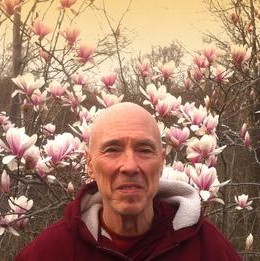 …I know firsthand that chronic bodily pain can eat deeply into the entrails of the spirit. It can cast dark shadows over the chambers of the heart & pull one down into moods of dejection & despair. I cannot claim to have triumphed over pain, but in the course of our long relationship, I’ve discovered some guidelines that have helped me to endure the experience.
…I know firsthand that chronic bodily pain can eat deeply into the entrails of the spirit. It can cast dark shadows over the chambers of the heart & pull one down into moods of dejection & despair. I cannot claim to have triumphed over pain, but in the course of our long relationship, I’ve discovered some guidelines that have helped me to endure the experience.
First of all, it is useful to recognize the distinction between physical pain & the mental reaction to it. Although body & mind are closely intertwined, the mind does not have to share the same fate as the body. When the body feels pain, the mind can stand back from it. Instead of allowing itself to be dragged down, the mind can simply observe the pain. Indeed, the mind can even turn the pain around & transform it into a means of inner growth.
The Buddha compares being afflicted with bodily pain to being struck by an arrow. Adding mental pain (aversion, displeasure, depression, or self-pity) to physical pain is like being hit by a second arrow. The wise person stops with the first arrow. Simply by calling the pain by its true name, one can keep it from extending beyond the physical, and thereby stop it from inflicting deep & penetrating wounds upon the spirit.
Pain can be regarded as a teacher—a stern one that can also be eloquent. My head pain has often felt like a built-in buddha who constantly reminds me of the first noble truth…
The experience of chronic pain has enabled me to understand how inseparable pain is from the human condition. This is something that we in America, habituated as we are to comfort & convenience, tend to forget. Chronic pain has helped me to empathize with the billions living daily with the gnawing pain of hunger; with the millions of women walking miles each day to fetch water for their families; with those in Third World countries who lie on beds in poorly equipped, understaffed hospitals, staring blankly at the wall…
The most powerful tool I’ve found for mitigating pain’s impact is a short meditative formula repeated many times in the Buddha’s discourses: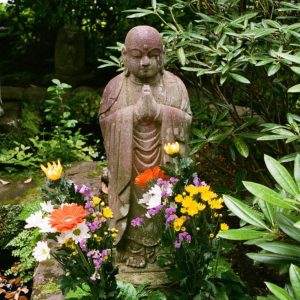 “Whatever feelings there may be—past, present, or future—all feeling is not mine, not I, not my self.” Benefiting from this technique does not require deep samadhi or a breakthrough to profound insight. Even using this formula during periods of reflective contemplation helps to create a distance between oneself & one’s experience of pain.
“Whatever feelings there may be—past, present, or future—all feeling is not mine, not I, not my self.” Benefiting from this technique does not require deep samadhi or a breakthrough to profound insight. Even using this formula during periods of reflective contemplation helps to create a distance between oneself & one’s experience of pain.
Such contemplation deprives the pain of its power to create nodes of personal identification within the mind, and thus builds equanimity & fortitude. Although the technique takes time & effort, when the three terms of contemplation—“not mine, not I, not my self”—gain momentum, pain loses its sting & cracks opens the door to the end of pain, the door to ultimate freedom.
Venerable Bhikkhu Bodhi, an American Buddhist monk who received novice ordination in Sri Lanka in 1972 & full ordination in 1973, lives & teaches at Chuang Yen Monastery in New York State. He is a prolific translator from the Pali Canon, the most ancient collection of Buddhist scriptures & is founder of the organization Buddhist Global Relief, which funds projects to fight hunger & to empower women across the world. This piece was excerpted from an article in a 2016 issue of Lion’s Roar magazine.
‘Garden Bathing’ in Harmony with the ‘Way of Things’
By Marcia Rose
 My yearly endeavor of Spring, Summer & Fall gardening was not possible last year. I was very sick… sick enough to be in hospital for a month & then sent home in hospice. As it all evolved, I ‘graduated from hospice above ground, which is very unusual,” as one of my doctors said. This year, my 84th, I am back to growing much of my food & tending the extensive flower gardens that grace this piece of northern New Mexico ground I have the honor of living on.
My yearly endeavor of Spring, Summer & Fall gardening was not possible last year. I was very sick… sick enough to be in hospital for a month & then sent home in hospice. As it all evolved, I ‘graduated from hospice above ground, which is very unusual,” as one of my doctors said. This year, my 84th, I am back to growing much of my food & tending the extensive flower gardens that grace this piece of northern New Mexico ground I have the honor of living on.
As I go about the daily process of carefully, kindly & mindfully tending & harvesting vegetables & flowers, I intimately touch into the clear mirror of the ‘way of things.’ I am reminded that planting, tending & harvesting plants is an act & process of unconditional love, calling for me to be in an ongoing relationship to life & in harmony with this ‘way of things.’
As I work, I mindfully observe the constant & never-ending changes of a tomato plant… from seed to plant to fruit & back to seed, acknowledging that some seeds never develop into form. I appreciate the variation of each rose blossom in response to the conditions that it is blooming in… and the daffodil’s brief flowering & quick withering. I see & absorb the strong response of each plant to rainfall, or a plant’s response to not receiving the water it needs.
I am aware of intimately touching into the understanding that not only does each & every plant in the garden go through the process of birth,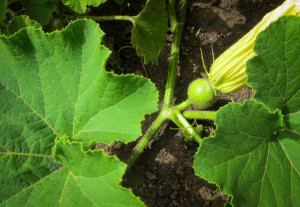 change & perishing… every animate & inanimate form of life displays & goes through this inevitable process. As each of us life forms move through this totally natural process, we are also in the midst of an intimate & intricate interdependent relationship with all other life forms, both near & far. My teacher, the garden, clearly displays & reflects this. I recognize again & again that this is also my human reality, if I’m willing to let this truth in.
change & perishing… every animate & inanimate form of life displays & goes through this inevitable process. As each of us life forms move through this totally natural process, we are also in the midst of an intimate & intricate interdependent relationship with all other life forms, both near & far. My teacher, the garden, clearly displays & reflects this. I recognize again & again that this is also my human reality, if I’m willing to let this truth in.
“The entire cosmos is a cooperative. The sun, the moon & the stars live together as a cooperative. The same is true for humans & animals, trees & soil. Our bodily parts function as a cooperative. When we realize that the world is a mutual interdependent, cooperative enterprise, then we can build a noble, even heavenly environment.” —Buddhadassa Bhikku
I clearly note my joy & appreciation of the bright yellow color & exquisite form of a daffodil, and then recognize within days that it’s on its way out. I recall my own experience a year ago – on the verge of my own possible death – of a clear & deep feeling of letting go… not giving up… but just simply letting go because it appeared to be time for this. There was also a clear deep knowing & acknowledgment that trying to cling on would produce contraction & be painful. Flowers ‘know’ intrinsically when this time arrives. Most of us humans need to learn this through years of practice.
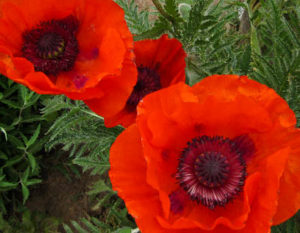 Today I sat outside in the rain under the roof of the small porch behind my house… openhearted, in love & fully present to all that was visibly being rained on, and to the many birds that were eating, singing & appeared in their own way to be enjoying the gentle rain that was moisturizing everything. Today was an experience of ‘garden bathing’ at its best… feeling intrinsically deeply grateful for & joyfully intertwined in the amazing abundance of life forms appearing all around me.
Today I sat outside in the rain under the roof of the small porch behind my house… openhearted, in love & fully present to all that was visibly being rained on, and to the many birds that were eating, singing & appeared in their own way to be enjoying the gentle rain that was moisturizing everything. Today was an experience of ‘garden bathing’ at its best… feeling intrinsically deeply grateful for & joyfully intertwined in the amazing abundance of life forms appearing all around me.
‘Bathing in the way of things’ can bring us a sense of harmony & deep ease when we are truly able to let it all in.
Spring morning crickets
singing their heart out
and into mine.
“Satipatthana in a Tangerine”
By Jean Smith
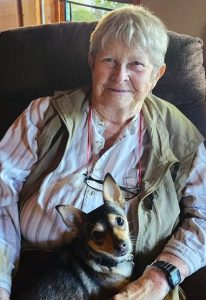 An engaging way to teach a course in beginning mindfulness is to hand each new yogi a tangerine when they arrive. They’ll sit down & gingerly hold the fruit as if it’s too hot, occasionally taking discreet glances at it to make sure it really is a tangerine, wondering what it’s for. They soon learn: It’s the object of a guided 30-minute mindfulness meditation. Even experienced yogis graced with Beginner’s Mind find this meditation unexpectedly intriguing. Briefly, this is the guidance:
An engaging way to teach a course in beginning mindfulness is to hand each new yogi a tangerine when they arrive. They’ll sit down & gingerly hold the fruit as if it’s too hot, occasionally taking discreet glances at it to make sure it really is a tangerine, wondering what it’s for. They soon learn: It’s the object of a guided 30-minute mindfulness meditation. Even experienced yogis graced with Beginner’s Mind find this meditation unexpectedly intriguing. Briefly, this is the guidance:
*Hear & follow the meditation instructions.
*Lightly juggle the tangerine so your fingers can sense its firmness & weight.
*Look at the colors to see which are clear orange or mottled.
*Run your fingers over all of the fruit to feel where it is smooth or bumpy or creased.
*Smell the outside of the tangerine. Does this bring up memories such as the “smell of Christmas” or fruit in a holiday stocking?
*Bite the tangerine, smell & taste the inside & outside of the skin. Is either one pleasant or unpleasant? Do you want more tastes or none at all? Peel the tangerine.
*Break off a fruit section & put it in your mouth but don’t chew it. How do your taste buds react to the taste? Do you want more?
*Chew, swallow, and slowly finish eating the tangerine mindfully.
When the meditation is over, new students usually make comments like “Where did you find these tangerines?” or “This is the best tangerine I’ve ever tasted.” Their remarks are the perfect opening for the teacher to say, “Every aspect of your life can be just as delicious if you live it as mindfully as you ate this tangerine.” These students have just taken advantage of their amazing sense doors, sense discriminations of pleasant or unpleasant, and desire or aversion to eating more. They’ve probably also had short memories of holidays or picnics.
Unbeknownst to them, they have also had a short, guided tour of the Satipatthana Sutta, perhaps the Buddha’s most studied discourse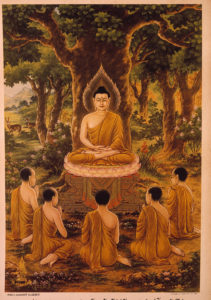 because of its comprehensiveness in teaching the objects that are the best for cultivating mindfulness through meditation: the body, feeling tones of pleasant-impermanent-unpleasant, the mind, and Dhammas (teachings of the Buddha).
because of its comprehensiveness in teaching the objects that are the best for cultivating mindfulness through meditation: the body, feeling tones of pleasant-impermanent-unpleasant, the mind, and Dhammas (teachings of the Buddha).
Why start new yogis here or invite experienced meditators to immerse themselves in the experience? Because every step of this meditation opens us to the absolutely amazing body we inhabit. After hundreds of millions of years, we beings have evolved exceptional color vision, hearing ability that would challenge the finest sound studios, tenderness of touch. We can perceive & identify through our senses most elements of the world around us, and usually know if we like or don’t like what we see, hear, taste, touch, and smell. And we can think about & experience emotional responses to this perceived world.
With the intention to cultivate mindfulness, we’re not merely setting off on a path of touchy-feely pleasures. As we meditate mindfully, we are directly & in the present moment exposed to the shifts of physical & mental sensations. These experiences condition our mind to wisdom: the ability to discern what is real. Even in the smallest increments, we are moving toward a wiser, kinder, more contented life.
To learn more about the Satipatthana Sutta, CLICK HERE
to read Thanissaro Bhikkhu’s description & excellent translation.
Jean Smith has practiced Buddhist meditation in the Vipassana-Insight Meditation tradition since 1986 & has led sanghas in New York City, the Adirondack Mountains & online from Taos NM. She has published nine books on Buddhism, including The Beginner’s Guide to Insight Meditation (with Arinna Weisman) & Life is Spiritual Practice (the Paramis). Jean serves on the board of The Mountain Hermitage.
Sylvia Boorstein on “I’m Not O.K., You’re Not O.K. — and That’s O.K.”
By Other Teachers & Folks We Value
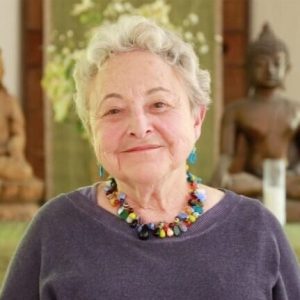 The clue is, Are you O.K.?
The clue is, Are you O.K.?
None of us is. The Buddha explained that as the truth of suffering. Having been born, we are all subject to the pain of loss, of grief, of sadness or even plain disappointment. Life is difficult. Even our joys, in their temporality, remind us of impermanence. Like the French poet Villon, we lament, wistfully, “Where are the snows of yesteryear?” We know that all the yesteryears are gone.
Psychologists would also reassure us of the appropriateness of our “non-O.K.-ness.” Each of us carries the gifts of our heritage, our family and our culture, as well as its wounds. It can’t be otherwise. A psychologist friend of mind once said, “If you wanted it perfect, you came to the wrong planet.” I am imagining this understanding, tacit or spoken, as the cornerstone of all healing relationships.
“Are you O.K.?”
“No. Not really. How about you?”
“Not me, either. But I’m O.K. to talk about it. It makes the journey less lonely. Let’s talk.”
And, we can talk to ourselves kindly. I tell mindfulness practitioners to listen to the tone their inner voice uses to comment on their experience. I ask them to consider whether, if they had a friend who spoke that way, they would keep that friend. The moment in which people discover they are not holding themselves in compassion, not speaking kindly, is often startling and always sad. That awareness is sometimes enough to cause the critic’s voice to soften, and the soother’s voice to be heard.
experience. I ask them to consider whether, if they had a friend who spoke that way, they would keep that friend. The moment in which people discover they are not holding themselves in compassion, not speaking kindly, is often startling and always sad. That awareness is sometimes enough to cause the critic’s voice to soften, and the soother’s voice to be heard.
Excerpted from article in July 2012 issue Lion’s Roar.
CLICK to read in full.
Sylvia Boorstein, PhD, has been teaching Dharma & mindfulness meditation since 1985. She is a founding teacher of Spirit Rock Meditation Center, a psychotherapist, wife, mother & grandmother. She is particularly interested in emphasizing daily life as mindfulness practice & including informed citizenship & social activism as integral to spiritual maturation.
Sayadaw U Pandita on “Five Benefits of Walking Meditation”
By Other Teachers & Folks We Value
 The Buddha described five additional, specific benefits of walking meditation. The first is that one who does walking meditation will have the stamina to go on long journeys. This was important in the Buddha’s time, when bhikkhus & bhikkhunis, monks and nuns, had no form of transportation other than their feet & legs. You who are meditating today can consider yourselves to be bhikkhus, and can think of this benefit simply as physical strengthening.
The Buddha described five additional, specific benefits of walking meditation. The first is that one who does walking meditation will have the stamina to go on long journeys. This was important in the Buddha’s time, when bhikkhus & bhikkhunis, monks and nuns, had no form of transportation other than their feet & legs. You who are meditating today can consider yourselves to be bhikkhus, and can think of this benefit simply as physical strengthening.
The second benefit is that walking meditation brings stamina for the practice of meditation itself. During walking meditation a double effort is needed. In addition to the ordinary, mechanical effort needed to lift the foot, there is also the mental effort to be aware of the movement — and this is the factor of right effort from the Noble Eightfold Path. If this double effort continues through the movements of lifting, pushing & placing, it strengthens the capacity for that strong, consistent mental effort all yogis know is crucial to vipassana practice.
Thirdly, according to the Buddha, a balance between sitting & walking contributes to good health, which in turn speeds progress in practice. Obviously it is difficult to meditate when we are sick. Too much sitting can cause many physical ailments. But the shift of posture & the movements of walking revive the muscles & stimulate circulation, helping prevent illness.
The fourth benefit is that walking meditation assists digestion. Improper digestion produces a lot of discomfort & is thus a hindrance to practice. Walking keeps the bowels clear, minimizing sloth & torpor. After a meal & before sitting, one should do a good walking meditation to forestall drowsiness. Walking as soon as one gets up in the morning is also a good way to establish mindfulness & to avoid a nodding head in the first sitting of the day.
Last, but not least of the benefits of walking is that it builds durable concentration. As the mind works to focus on each section of the movement during a walking session, concentration becomes continuous. Every step builds the foundation for the sitting that follows, helping the mind stay with the object from moment to moment – eventually to reveal the true nature of reality at the deepest level. This is why I use the simile of a car battery. If a car is never driven, its battery runs down. A yogi who never does walking meditation will have a difficult time getting any where when he or she sits down on the cushion. But one who is diligent in walking will automatically carry strong mindfulness & firm concentration into sitting meditation.
I hope that all of you will be successful in completely carrying out this practice. May you be pure in your precepts, cultivating them in speech & action thus creating the conditions for developing samadhi & wisdom.
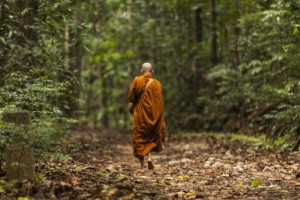
May you follow these meditation instructions carefully, noting each moment’s experience with deep, accurate & precise mindfulness, so that you will penetrate into the true nature of reality. May you see how mind & matter constitute all experiences, how these two are interrelated by cause & effect, how all experiences are characterized by impermanence, unsatisfactoriness & absence of self so that you may eventually realize nibbana – the unconditioned state that uproots mental defilements – here & now.
Excerpted from the book In This Very Life: Liberation Teachings of the Buddha
by Sayadaw U Pandita
The Venerable Sayadaw U Pandita died on April 16, 2016. One of the foremost masters of Vipassana, he trained in the Theravada Buddhist tradition of Myanmar & was successor to the late Mahasi Sayadaw. This eminent Dharma master was a key influence on many of the Insight Meditation Society’s teachers & played an important role in IMS’s history.
Mindfulness of the Body as a Wise Refuge
By Tempel Smith
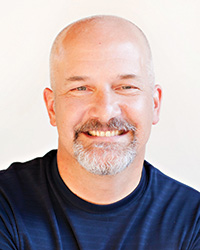 When we practice mindfulness meditation, we most often start with guiding our attention to our own immediate bodies. Students of mindfulness become aware of the simple sensations of breathing in & out, and then expand mindfulness to include all body sensations. We can also become aware of our bodies in stillness & during daily activities. From a steady foundation of mindfulness of the body, many aspects of the Buddha’s teachings ripen into the experience of true happiness & liberation. Mindfulness of the body becomes a refuge for developing compassion & wisdom.
When we practice mindfulness meditation, we most often start with guiding our attention to our own immediate bodies. Students of mindfulness become aware of the simple sensations of breathing in & out, and then expand mindfulness to include all body sensations. We can also become aware of our bodies in stillness & during daily activities. From a steady foundation of mindfulness of the body, many aspects of the Buddha’s teachings ripen into the experience of true happiness & liberation. Mindfulness of the body becomes a refuge for developing compassion & wisdom.
The Buddha described this in one discourse called “The Six Animals” (SN 35.247). He gave the image of six different wild animals tied to each other by ropes & all struggling to find familiar safety from their own perspective. An alligator wants to run to the swamps, while a monkey wants to run to the trees. These six wild animals are an analogy for our five worldly sense doors (eyes, ears, nose, tongue, and somatic sensory) plus the sense door of mental activity (thoughts, images, inner voice, etc.). When there is no central reference point such as our breath, our attention is endlessly pulled in six different directions, only to become fatigued & scattered.
Mindfulness of the body becomes a central pillar or post, like tethering these six wild animals to a column, showing us a different kind of  happiness & contentment. Our senses show us the world, yet we don’t need to compulsively chase tastes, sights, sounds, or thoughts, trying to capture them. Instead our well being comes from having our bodies ground us like a pillar. Strangely, as this happens, our senses relax & become clearer. The taste of food, for example, becomes more exquisite as we rest in our bodies & receive the flavors.
happiness & contentment. Our senses show us the world, yet we don’t need to compulsively chase tastes, sights, sounds, or thoughts, trying to capture them. Instead our well being comes from having our bodies ground us like a pillar. Strangely, as this happens, our senses relax & become clearer. The taste of food, for example, becomes more exquisite as we rest in our bodies & receive the flavors.
When our senses no longer pull us outward, causing us to become ungrounded, we experience a deep turning in mindfulness. We find peace within ourselves & are able to receive the world more fully through our senses.
Illustration by Barry Bruner, Tricyle Magazine Summer 2007
The importance of joy, gratitude & inner abundance…
By Kristina Baré
 The year 2023 has been difficult for many of us; illness, climate change, political tension and war, have been at the forefront of our minds for many months.
The year 2023 has been difficult for many of us; illness, climate change, political tension and war, have been at the forefront of our minds for many months.
We need to call upon the heart qualities of loving-kindness, compassion and equanimity to help us face this harsh reality. Yet, what is equally important in challenging times, is the factor of mudita, the factor of joy.
Mudita is translated into English as “sympathetic joy,” “empathetic joy” or “altruistic joy.” It is the reverberation of an open heart when in contact with the well being, happiness and good fortune, of other beings.
By celebrating the happiness of beings, we invite our hearts into a place of “enoughness.” We move from an orientation of scarcity, to an orientation of abundance. In celebrating someone else’s good fortune, there is the potential of deeply nourishing ourselves as well. When we find a way to surrender to the experience of abundance in mudita, the source of joy (mine or yours) is no longer so relevant. We are simply nourished by the fact that there are moments of joy in this world, just as there are moments of sorrow.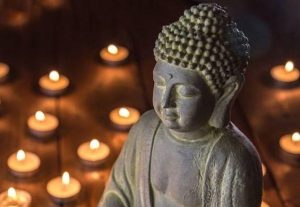
The inner dimension of mudita is gratitude. With gratitude we remember the big and small things to celebrate in our own lives; the food on the table, a kind friend, the sunlight on our face, the experience of breathing in the here-and-now. The “objects” of our gratitude is less important than the act of remembering the possibility of gratitude. Again we practice lifting our hearts into a state of greater abundance.
The practice of joy is not to deny the challenge of this world. Rather, including joy is needed to keep our hearts balanced. With balance we open to the whole spectrum of this human life more fully, including all that is difficult and all that is beautiful.
Larry Rosenberg on The Supreme Meditation
By Other Teachers & Folks We Value
In addressing the practice of death awareness, the Buddha left us five contemplations, which he advised us to reflect on frequently.
The Five Contemplations
1. I am subject to aging. Aging is unavoidable.
2. I am subject to illness. Illness is unavoidable.
3. I am subject to death. Death is unavoidable.
4. I will grow different, separate from all that is dear and appealing to me.
5. I am the owner of my actions, heir to my actions, born of my actions, related through my actions, and live dependent on my actions. Whatever I do, for good or for ill, to that will I fall heir.
This isn’t the cheeriest set of reflections in the world, and most people, when they first hear them, feel some resistance. They don’t mind contemplating the Buddhist doctrine of impermanence in the world around them, but this is getting a little close to home. What is being asked of us as meditators is to come face-to-face with the law of impermanence in an intimate way…
But in the Asian countries where Buddhism has been established for centuries, the practice of death awareness is an ancient & venerable tradition, and many meditators work with it. In fact, there are some who regard death awareness as the ultimate practice. The Buddha  himself left behind such a statement. “Of all the footprints,” he said, “that of the elephant is supreme. Similarly, of all mindfulness meditation, that on death is supreme.”
himself left behind such a statement. “Of all the footprints,” he said, “that of the elephant is supreme. Similarly, of all mindfulness meditation, that on death is supreme.”
Though these contemplations may sound morbid & depressing, working with them can have quite the opposite effect. Students often report—and I have experienced myself—a certain lightheartedness that comes from practicing them, a feeling of calm & ease. Many of us are carrying around a great deal of unacknowledged fear on the subject of death, and like any other fear, it weighs us down. Practicing death awareness helps flush out this fear, enabling us to face it & showing us that it too is an impermanent formation that is empty of self. The fear lingers in our consciousness when we don’t acknowledge it & let it live out its life.
Death is a fact of existence, one that we all must face sometime. And death awareness is a real aid to practice. A deep understanding of mortality can often lead to awakening. Seeing that we don’t have forever becomes a real motivating factor.
mortality can often lead to awakening. Seeing that we don’t have forever becomes a real motivating factor.
In Pali this phenomenon is known as samvega: the urgent need to practice that can grow out of a heightened sense of the perishable nature of life. It can include a real feeling of shock & a sense not only that life doesn’t last forever but also that the way we have been living is wrong. It might turn our world upside down, sending us off to a whole new way of life. Even if it doesn’t have so dramatic an effect, it can light a fire under our practice. We get much less caught up in power, prestige, money, lust, the acquisition of goods. Dharma teachings start to make real sense to us, and we begin to live them instead of just assenting intellectually. Samvega leads to a conversion of the heart, from an egocentric existence to a search for that which is timeless, vast & sacred.
Excerpted from article that appeared in September 2020 issue of Lion’s Roar.
CLICK HERE to read article in full.
Larry Rosenberg is founder & a guiding teacher at the Cambridge Insight Meditation Center in Cambridge, MA. He is also a senior teacher at the Insight Meditation Society and author of several books, including Breath by Breath: The Liberating Practice of Insight Meditation.
PATIENCE – The Dharma of an Early Fall Garden
By Marcia Rose
Marcia returns to her beloved garden…
What is the Dharma of my early fall garden? Lately I’ve asked myself and the garden this question many times over. Each morning and  early evening, as I slowly walk through and diligently work a bit in the garden, with my returning energy, stamina, deep care and interest I also mindfully observe the abundance of the growing and constantly changing greenery, vegetables, blossoms and flowers. This riotous multicolored display spreading through my garden here in northern New Mexico offers the perfect laboratory for practice, right in the midst of ‘the way of all things’.
early evening, as I slowly walk through and diligently work a bit in the garden, with my returning energy, stamina, deep care and interest I also mindfully observe the abundance of the growing and constantly changing greenery, vegetables, blossoms and flowers. This riotous multicolored display spreading through my garden here in northern New Mexico offers the perfect laboratory for practice, right in the midst of ‘the way of all things’.
One recent morning, with deep joy I behold a bursting pink and white ‘peace’ rose bud. A few days later the flower has opened fully and is already wilting and changing color around the edges. I notice a subtle tug in my heart, and then the relaxed receptivity of ‘Yes, and this too just does what comes naturally to all of us.’
On a slow evening walk through the garden, on my own without the aid of a ‘walking device’, I clearly see that there are two green strawberries and the zucchini squash is only a quarter inch larger than the other day. I notice a momentary and very subtle contraction in the heart and mind… quickly followed by the internal Dharma wisdom saying, “Patience, all happens in good time”. The apples are turning red, but still too small to pick. “Should I pick apples for dessert and snacks? No, not yet.  They need more time to grow”. Sweet peas are exquisitely ready and waiting… a clear “yes for dinner” comes through this time.
They need more time to grow”. Sweet peas are exquisitely ready and waiting… a clear “yes for dinner” comes through this time.
A primary Dharma lesson harvested each day from this garden is ‘patience’. Repeatedly I learn that patience blossoms in a heart and mind that are rooted in quietude, serenity, openness, care and peace. I and all the growing things in the garden are by nature ‘hastening slowly,’ and I understand more deeply the words ‘patience is the highest form of devotion’.
I imbibe and digest these garden Dharma lessons… into my meditation practice, my slowly healing body, and out into my relationship with the larger and often challenging current world we live in.
The Buddha used the word ‘forbearance’ as a description of patience… meaning a heart and mind rooted in the qualities of receptivity, unconditional acceptance and softness. This ‘forbearance’ allows us to open to and be fully present in each moment with respect, dignity, humility and gratitude. We patiently honor the moment… no matter what we are facing in our mind, heart and body… no matter what’s coming to us from the world around us. My early fall garden Dharma practice helps me come to know in a deeply experiential way the great advantage of this ‘forbearance’. It offers great benefit for the whole of our life, as well as great benefit in relationship to our meditation practice, as the heart/mind develops towards deeper and more mature concentration, kindness, gratitude and wisdom.
advantage of this ‘forbearance’. It offers great benefit for the whole of our life, as well as great benefit in relationship to our meditation practice, as the heart/mind develops towards deeper and more mature concentration, kindness, gratitude and wisdom.
As we practice and live more patiently, as we become more ‘still and wide’ while at the same time determined and diligent in and with our practice, it is inevitable that we will experience an increase of calm, tranquility, joy, peace, fearlessness and understanding/wisdom within our practice and within our life as a whole. It’s inevitable that there will be a continued blossoming of kind-heartedness and a growing ability to live a compassionate and beneficial life.
As I experience the slow healing of my body – after 2 months of ‘knock, knock, knocking at heaven’s door’ followed by 2 ½ months of gradually improving levels of functioning – I bring fresh appreciation to all the magnificent wonders of this early fall garden, and my heart/mind is filled with boundless patience and gratitude for the nature and the way of all things.
Teacher Gil Fronsdal reflects on The Joy of Giving…
By Other Teachers & Folks We Value
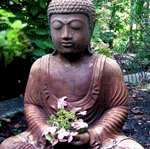 “If beings knew, as I know, the results of giving & sharing, they would not eat without having given, nor would the stain of selfishness overcome their minds. Even if it were their last bite, their last mouthful, they would not eat without having shared, if there were someone to receive their gift.” —Itivuttaka 26
“If beings knew, as I know, the results of giving & sharing, they would not eat without having given, nor would the stain of selfishness overcome their minds. Even if it were their last bite, their last mouthful, they would not eat without having shared, if there were someone to receive their gift.” —Itivuttaka 26
The practice of giving, or dana in Pali, has a preeminent place in the teachings of the Buddha. When he taught a graduated series of practices for people to engage in as they progress along the path, he always started by talking about the importance & benefits of the practice of generosity. Based on that foundation, he talked about the importance & benefits of the practice of ethics. Then he discussed the practices of calming the mind, and after that he described the insight practices, which, supported by a calm & stable mind, lead to enlightenment. Once a person had awakened, the Buddha often instructed him or her to go out to benefit others, to be of service. Service can be seen as an act of generosity, so the Buddhist path begins & ends with this virtue.
Dana refers to the act of giving & to the donation itself. … An act of generosity entails giving more than is required, customary, or expected relative to one’s resources & circumstances. Certainly it involves relinquishment of stinginess, clinging, and greed. In addition, generosity entails relinquishing some aspects of one’s self-interest, and thus is a giving of one’s self. The Buddha stressed that the spiritual efficacy of a  gift is dependent not on the amount given but rather on the attitude with which it is given. A small donation that stretches a person of little means is considered of greater spiritual consequence than a large but personally insignificant donation from a wealthy person.
gift is dependent not on the amount given but rather on the attitude with which it is given. A small donation that stretches a person of little means is considered of greater spiritual consequence than a large but personally insignificant donation from a wealthy person.
One way that the giver sees his or her generosity return is found in “instant karma,” the Buddhist idea that acts that you do have direct consequences on the state of your mind & heart, even as you do them. The consequences of giving are quite wonderful in the present moment; if we are present for them, we can receive these wonderful consequences during the act of giving.
The Buddha emphasized the joy of giving. Dana is not meant to be obligatory or done reluctantly. Rather, dana should be performed when the giver is “delighted before, during, and after giving.”
At its most basic level, dana in the Buddhist tradition means giving freely without expecting anything in return. The act of giving is purely out of compassion or goodwill, or the desire for someone else’s well-being. Perhaps dana is more about how we are than what we do. Through generosity, we cultivate a generous spirit. Generosity of spirit will usually lead to generosity of action, but being a generous person is more important than any particular act of giving. After all, it is possible to give without its being a generous act.
 Although giving for the purposes of helping others is an important part of the motivation & joy of giving, the Buddha considered giving for the purpose of attaining nibbana as the highest motivation. For this purpose, “one gives gifts to adorn & beautify the mind.” Among these adornments are nonclinging, lovingkindness, and concern for the well-being of others.
Although giving for the purposes of helping others is an important part of the motivation & joy of giving, the Buddha considered giving for the purpose of attaining nibbana as the highest motivation. For this purpose, “one gives gifts to adorn & beautify the mind.” Among these adornments are nonclinging, lovingkindness, and concern for the well-being of others.
